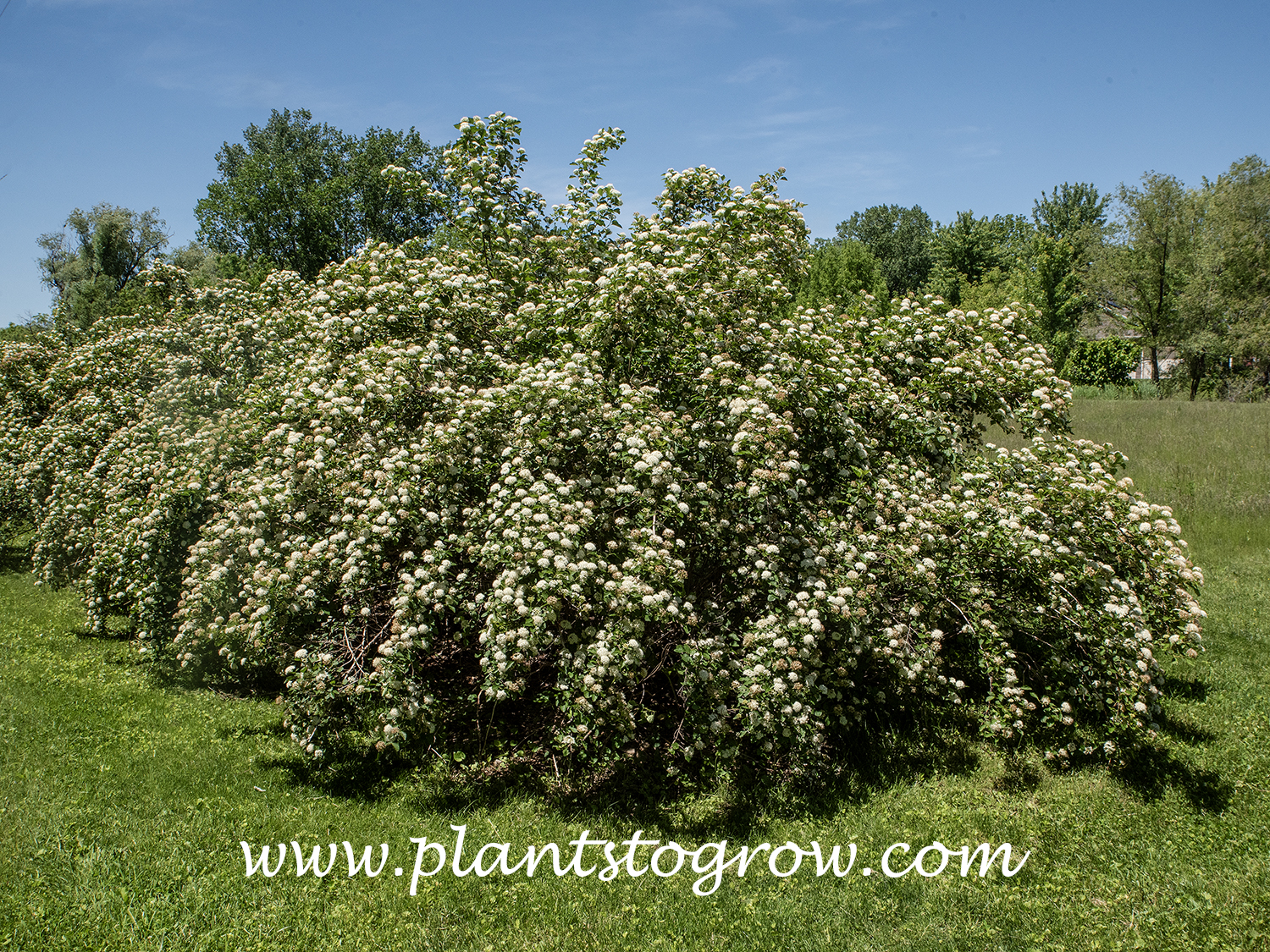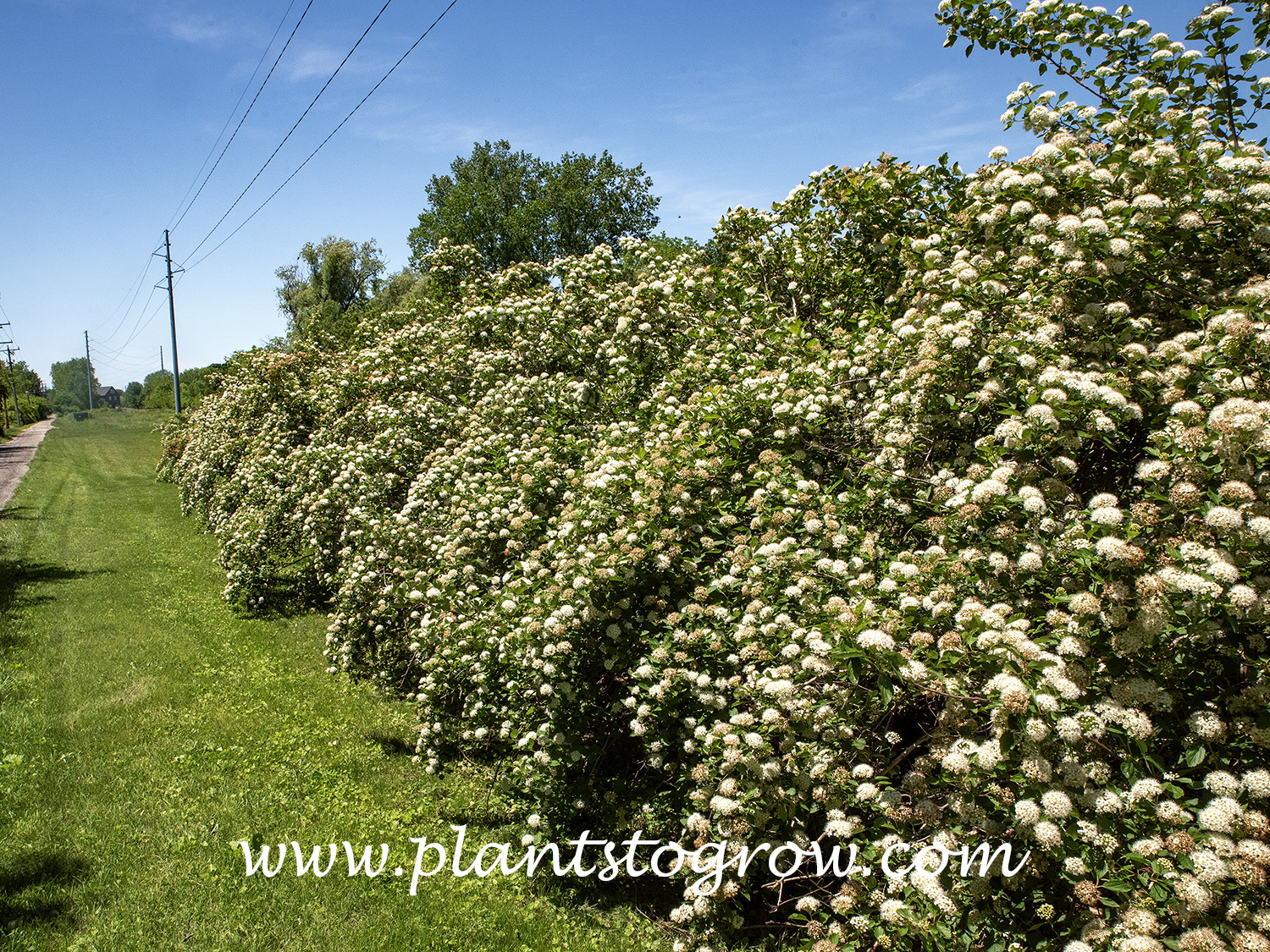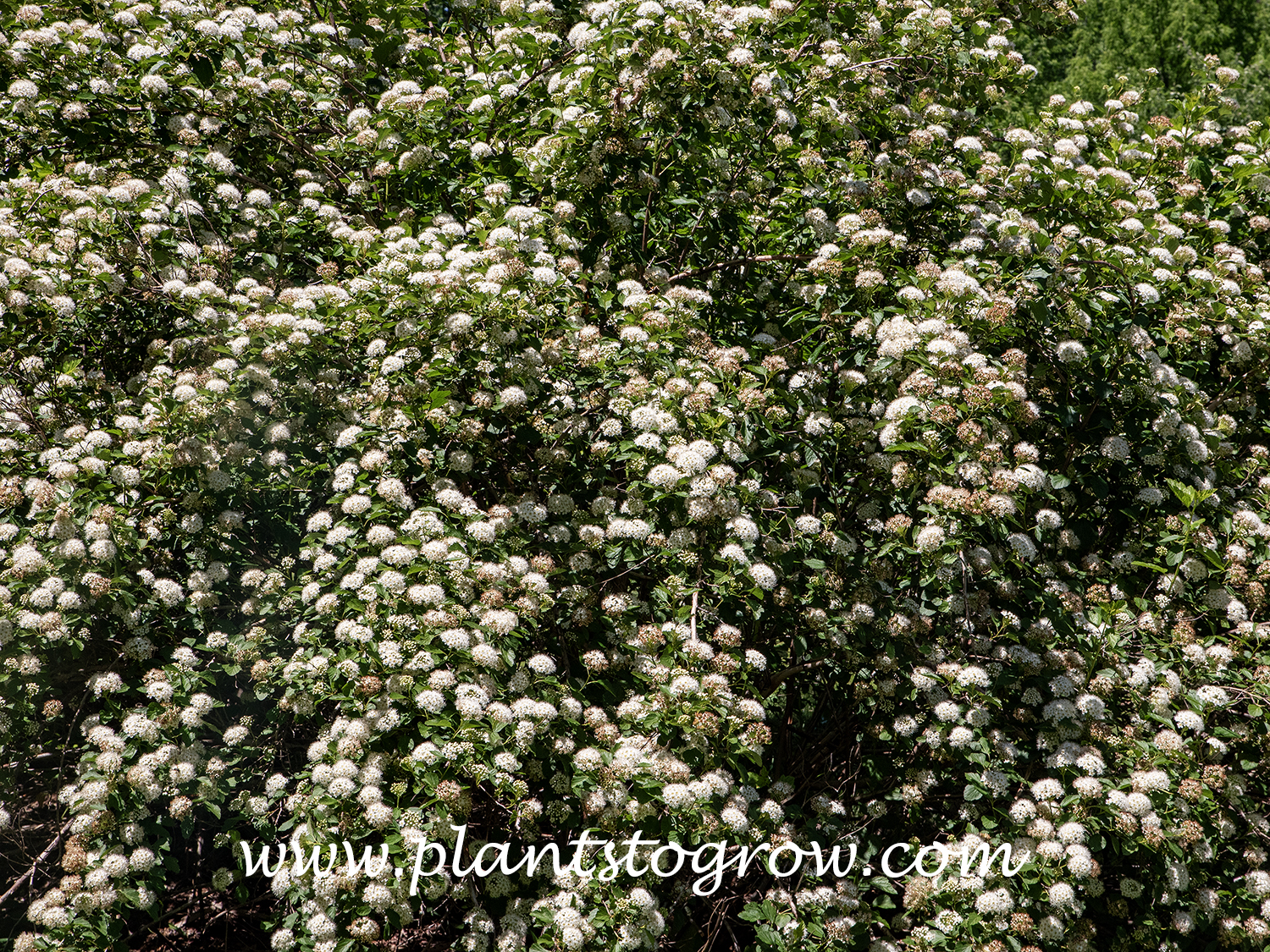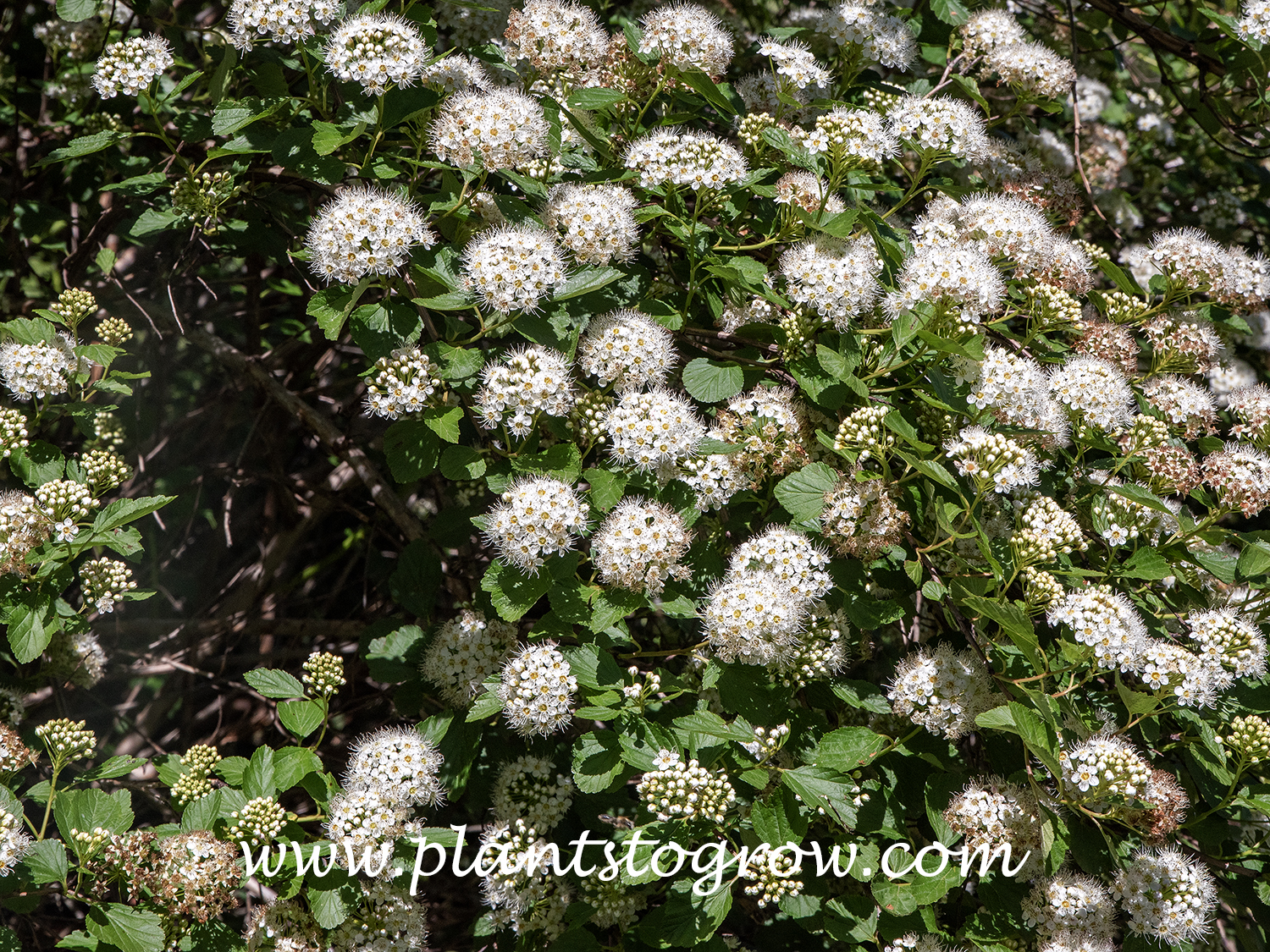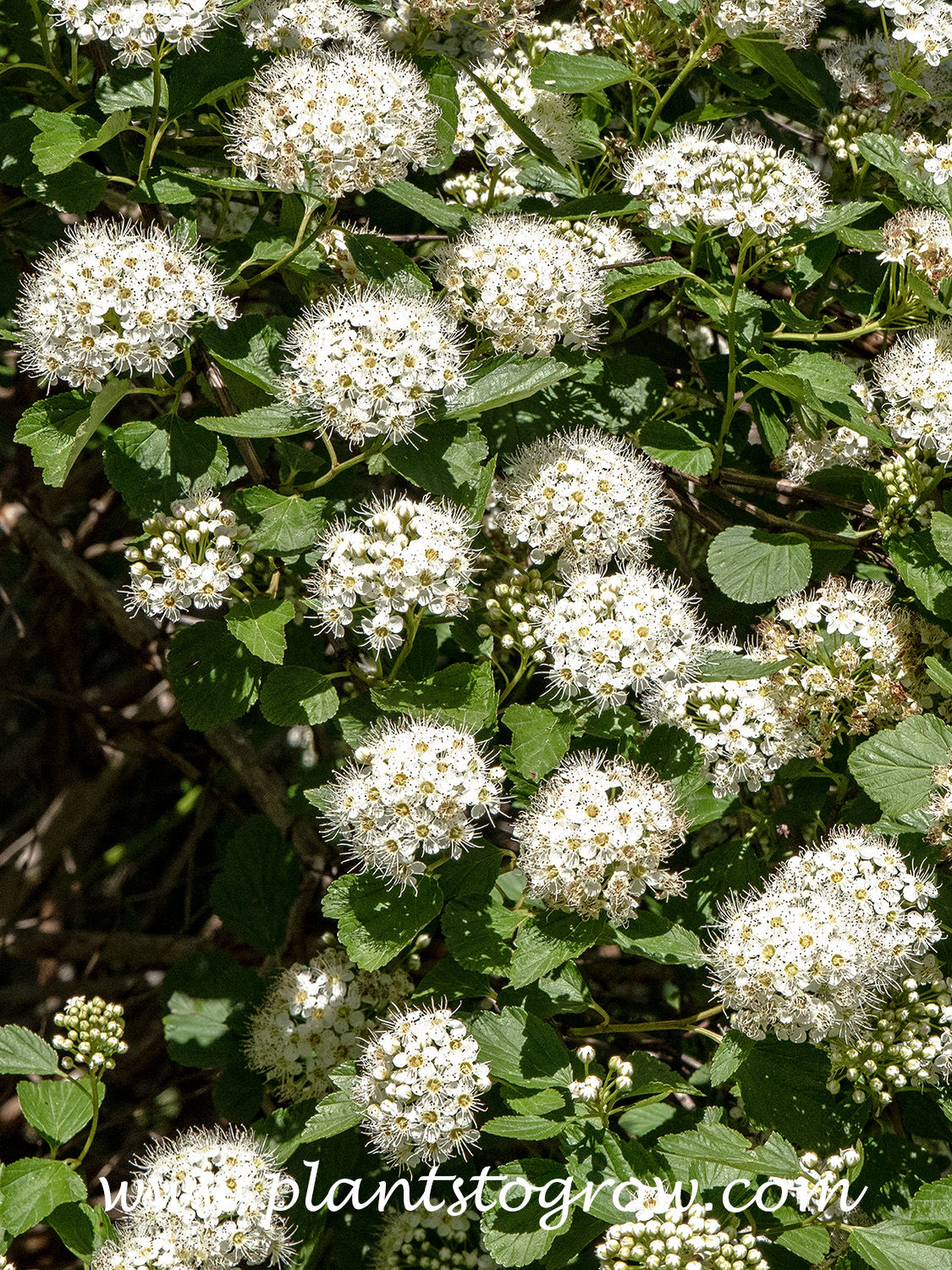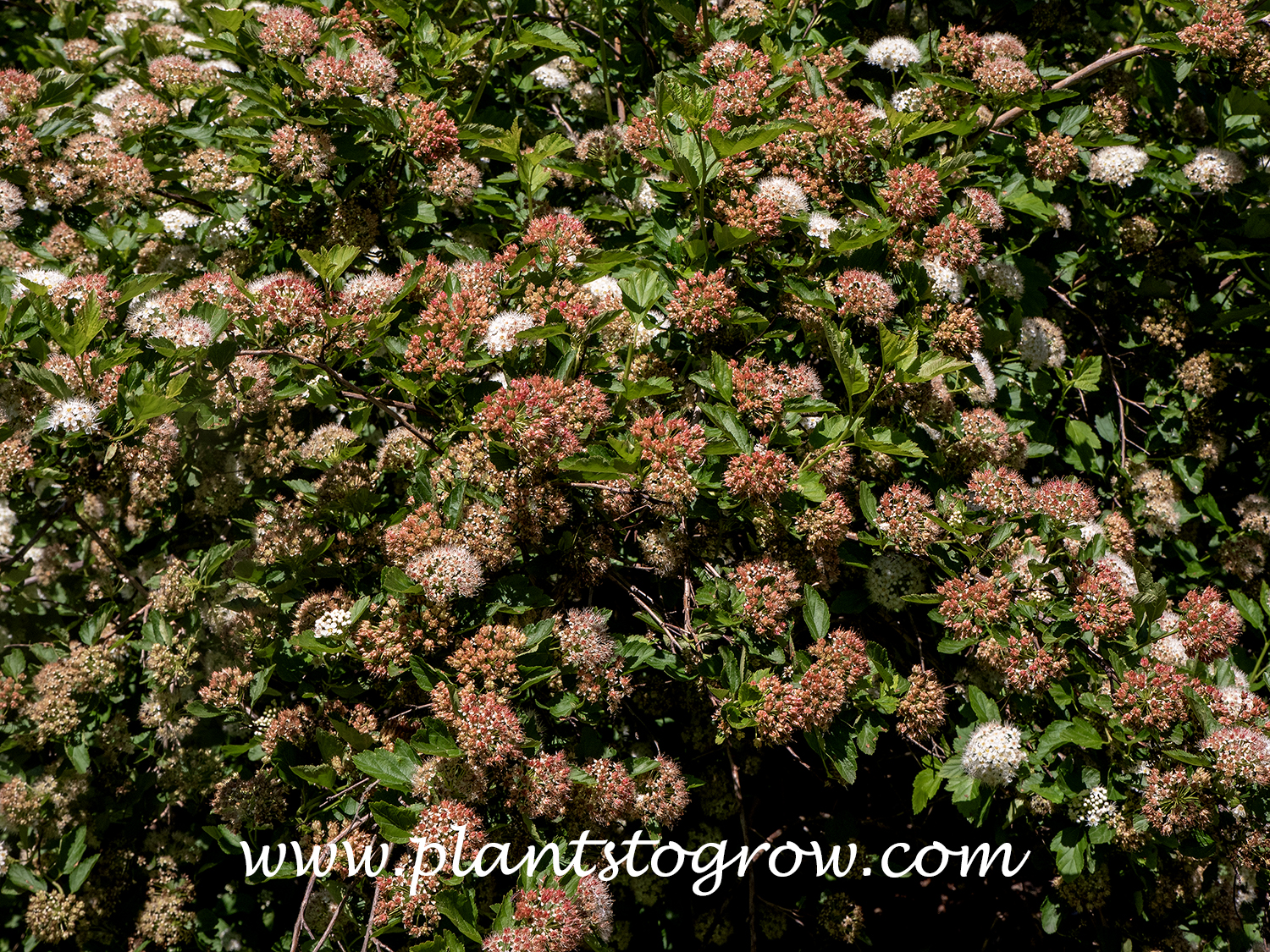| Description | Ninebark (Physocarpus opulifolius) is a tough deciduous shrub native to the eastern United States. Ornamental brown to reddish seed capsules follow its white flowers. |
|---|---|
| Pronunciation | (fi-so-KAR-pus)(op-u-li-FO-li-us) |
| Plant Type | Shrubs Deciduous, Site author's observations |
| Hardiness Zone | 2-7 |
| Sunlight | full, mostly sunny, some shade |
| Moisture | average to moist |
| Soil & Site | average to moist |
| Flowers | small white, five petaled, in dense flat rounded clusters (corymb). |
| Fruit | brown red, drooping inflated seed capsules with 3-5 follicles |
| Leaves | green, 3-5 lobes, serrated, green |
| Stems | bark on the older stems is exfoliating revealing layers of inner reddish to light brown |
| Roots | fibrous |
| Dimensions | 6-8 by 6-8 plus feet, upright spreading with recurved branches |
| Maintenance | It will be common, ragged, and unkept. At this time, cut it back hard, and it will grow into a fresh new plant. |
| Propagation | cuttings |
| Native Site | The common Ninebark (Physocarpus opulifolius) native from the east coast to the states just west of the Mississippi and up through Canada. |
| Author's Notes | I haven't seen this plant used much in landscapes since the native plant has been over-seeded by many new and diverse cultivars, but I have seen it growing in many diverse sites in the wild. Many consider this shrub to be coarse, but there is nothing wrong with using it since it provides a pollen source for many insects and has ornamental value. |
| Notes & Reference | #01-Manual of Woody Landscape Plants (Michael Dirr), #226-Shrubs and Vines for American Gardens (Donald Wyman), #275-North Carolina Botanical Garden (https://floraquest.org/plant/), #274-Site Authors' observations and growing experiences |

Cart
